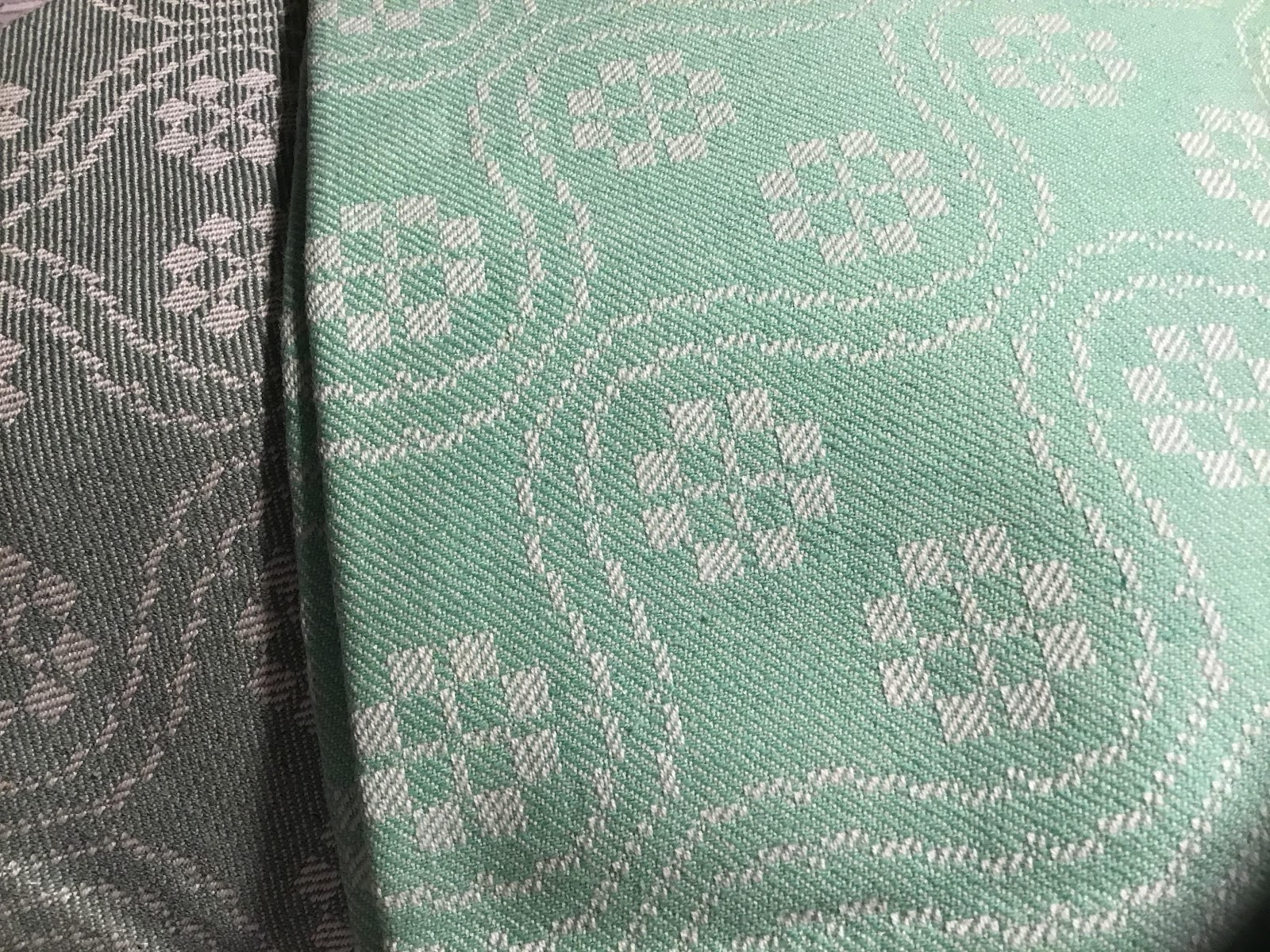We are well into spring, now. The plum trees are almost finished blooming, the grass is growing, temps rising.
Spring is such a time of hope. It is the time to plant things - and watch them grow.
Kind of like weaving.
Some cultures tended to weave in the winter. People generally lived in small spaces, and rather than set the loom up all year round, weaving for domestic necessaries tended to be done in the winter. Summer was for growing your food and preserving it for the coming cold months.
But not always, of course. Sometimes weaving happened in the summer, too. If you were a 'professional' weaver, you wove every day you could.
In fact. Sunday was declared a day of rest by the church in no small part because weavers would not make the deadline to finish weaving their warp by Monday, so instead of going to church of a Sunday morning, they would stay home...and weave.
People who wove for their income were one of the first professional groups who recognized that 'industrialization' would destroy the jobs and income of the weavers. They were called "Luddites" and rather than being 'only' against technological improvements (define 'improvement'?) they protested against the loss of jobs. They were not wanton destroyers of their looms, but the new-fangled mechanized looms that were putting skilled tradespeople out of work.
Sound familiar?
Kind of like, oh, I don't know, 'artificial intelligence'?
We, as a society, a species, are at a turning point. And quite frankly I cannot see where we will come out of this time of turmoil. I'm too old to worry over much about it. But I have been in touch with a young person who really would like to make weaving their, if not profession, at least an income generator.
I suggested my memoir, where I talk about my experiences, but also warned them that with the drastic changes to society, they will have to chart their own path. My experiences are now...stale. However, the lessons I learned along the way might prove useful to someone just setting their feet on the path. If you are in the US, there are no tariffs because it's just a PDF download.
Yesterday I finished setting up the warp and began weaving. Today I have massage, so I probably won't get to the loom today. OTOH, I have 'light duties' to do - like the info for the Zoom presentation in July. More info when it becomes available. I need to send them a headshot, bio and 5 photos of my work. Which has lead me down the path of remembering. I don't have 50 years worth of photos, but my photo file is...cumbersome. I should likely delete a bunch of the photos, and yet...the one above, which I am particularly fond of, and which I tend to use - here, if nothing else - still come in handy.
It is getting 'too late' to squeeze a session at the loom in before my appointment. I might take some time to read WEFT. Or Twist. Or fiddle with jigsaw pieces. The latest puzzle is of Hagia Sophia. I would love to get a puzzle of the interior, but this one shows the 'church/mosque/museum/mosque' at sunset. And I can remember the trip we did in 1995. I can think about the skills of our ancestors, creating a 'monument' of such beauty that it still stands. And hope that we manage to come through this 'interesting' times to survive, maybe even thrive.
(My other books are printed in the US, therefore can be purchased without tariffs, via blurb.com)




2 comments:
I made this pattern in overshot. Interesting that it can be done in twill too. But then overshot relates closely to twill doesn’t it. Soo
There is a theory that the development of 'overshot' came as a way to create large, intricate patterns on fewer shafts. The twill Snails Trail is woven in twill blocks over 16, but the overshot version only takes 4. :)
Post a Comment